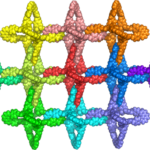リンショーピン大学の研究者を中心とする国際的な研究によると、顕著な気候変動と農業条件の変化が、ペルシャ帝国の興亡と一致していることが明らかになりました。研究者らは、イラン南東部における過去4,000年間の降水量と植生の歴史的変動を調査しました。 Pronounced climate fluctuations and changed conditions for agriculture coincided with the rise and fall of the Persian Empires, according to an international study led by researchers at Linköping University. The researchers have studied historical variations in precipitation and vegetation in southeastern Iran over the last 4,000 years.
2023-01-18 スウェーデン・リンショーピング大学
現在、イランの大部分は砂漠である。しかし、さらに歴史をさかのぼると、モンスーンのパターンが変わる前は、この地域全体が多くの降雨に見舞われていた。青銅器時代後期から古代末期にかけて、イランはこの地域の重要な政治・経済発展の中心的存在でした。「約4,200年前、ジロフト近くのコナール・サンダルには、初期青銅器時代のコミュニティがあった。農業が盛んで、都市遺跡も一部発掘されています。しかし、何かが引き金となって、この高度に発達した青銅器時代のコミュニティは崩壊しました。私たちは、それが何であったのかに興味がありました」と、『Quaternary Science Reviews』に掲載された研究を率いたリンショーピン大学テーマ研究学科のJoyanto Routh教授は言う。
国際的な研究者チームは、イラン南東部、コナル・サンダルの遺跡の近くで、過去4,000年間に植生と降水量が変化した可能性について詳しく調べました。彼らは、数千年にわたって堆積した物質が何層にも重なっている長さ2.5メートルの泥炭のコアにある堆積物を調べた。
泥炭層は炭素14法で年代測定された。さらに、微量元素、花粉、バイオマーカーの分析も行い、既存の考古学的データと組み合わせて、異なる時代にどのような植物や動物がこの地域に生息していたかを明らかにしました。歴史的な記録がない場合、これらの信号を追跡することで、そこに人が住んでいたかどうか、何かを栽培していたかどうか、もしそうなら何を栽培していたかを知る手がかりとなる。この情報をもとに、気候が暑かったのか寒かったのか、雨季なのか乾季なのかを復元することができるのです。雨期には農業が盛んになり、人口が増え、地域社会が発展した。一方、乾季には遊牧生活に移行し、集落を放棄したが、好条件が揃うと戻ってきた。
研究者たちは、この地域が断続的に雨期と乾期を繰り返していたことを突き止めたのである。セアリア系植物の花粉の記録から、約3,900〜3,700年前に集中的な農耕が始まったことが初めて明らかになった。この時期は、ジロフト渓谷が比較的湿潤な気候であったことと一致する。
一方、3,300年前から2,900年前までは、谷の気候は非常に乾燥し、風も強かった。セレリア型の花粉は非常に少なく、農耕がほとんど行われなくなったことを示している。ジロフト谷で最も乾燥した約3,200年前は、コナル・サンダルにおける青銅器時代後期の集落が崩壊した時期と重なる。その約600年後、ペルシャ帝国が出現し、ユーラシア史上最も強力な王国であるアケメネス朝帝国とササン朝帝国が誕生したが、これらは堆積物記録の中で最も雨の多かった二つの時期とほぼ同時期であった。
「アケメネス朝やササン朝が最盛期だったころは農業が盛んで、食料も豊富だったことが、ピートコアから明らかになりました。
研究者らは、これらの帝国の成功を気候の変動と結びつけることには慎重であるが、これらの相関関係は、気候変動の詳細な証拠と考古学的・歴史的文脈とを組み合わせて、初期の文明に影響を与えたと思われるさまざまな要因の相互作用を探ることの重要性を強調している、と主張している。
<関連情報>
- https://liu.se/en/news-item/climate-change-may-have-impacted-the-rise-and-fall-of-middle-eastern-civilisations
- https://www.sciencedirect.com/science/article/pii/S0277379122004863?via%3Dihub
イラン南東部における青銅器時代およびペルシャ帝国時代の社会の盛衰に降水が与えた影響の可能性を示す新しいマルチプロキシー記録 New multi-proxy record shows potential impacts of precipitation on the rise and ebb of Bronze Age and imperial Persian societies in southeastern Iran
Alireza Vaezi,Joyanto Routh,Morteza Djamali,Karolina Gurjazkaite,Vahid Tavakoli,Abdolmajid Naderi Beni,Patrick Roberts
Quaternary Science Reviews Available online :10 November 2022
DOI:https://doi.org/10.1016/j.quascirev.2022.107855

Highlights
- •Precipitation levels flip-flop from the mid-to-late Holocene in SE Iran.
•Climatic changes affected the Bronze age settlements and imperial dynasties.
•Dry periods coincide with cultural and political decline.
•Wet periods indicate thriving agriculture and growing political influence.
•The paleoenvironmental records simulate the interplay of political and climatic factors.
Abstract
The Achaemenids and Sasanian ‘Persian’ Empires were significant political, economic, and social forces in the Late Iron Age and Late Antiquity Eurasia, respectively, which have left marks on the heritage of the Mediterranean and Middle Eastern world. While attention is often focused on military and political conditions when discussing the prosperity and decline of these imperial powers, their realms, which crossed a variety of environmental settings, were highly dependent on the predictability of rainfall that drove agriculture and effective provisioning. Here, we present a multi-proxy sedimentological, geochemical, and palynological record from a 2.5-m long peat deposit near the excavation site in Konar Sandal near Jiroft in southeastern Iran, covering 4000-850 cal yr BP. Around 3950 cal yr BP a wet period prevailed based on elemental ratios, stable C isotope, pollen, and diagnostic lipids. Between 3900 and 3300 cal yr BP, wet/semi-wet conditions developed with the appearance of Cerealia-type pollen. Dry and windy conditions followed (ca. 3300-2900 cal yr BP), which coincided with the Siberian anticyclones and climatic shifts developing in the Eastern Mediterranean region. Consequently, the Bronze Age settlements around Jiroft, dependent on agriculture, underwent a steady decline. A prolonged wet period followed (ca. 2900-2300 cal yr BP) with the abundance of Sparganium-type pollen and the aquatic lipid proxy (Paq). This change coincided with intensive agricultural practices and the flourishing of the powerful Median and Achaemenid empires. The shift to high Ti/Al ratios coeval with the lowest δ13COM values suggests an increase in aeolian activity and dry conditions ca. 2100-1650 cal yr BP. The Jiroft valley again experienced wet conditions between 1550 and 1300 cal yr BP, which overlapped with the economic prosperity of the middle to late Sasanian empire. The paleoenvironmental reconstruction indicates that wet periods and intensive agriculture coincide with the Persian empires’ zenith, political influence, and economic affluence. Therefore, contextualized and detailed paleoenvironmental records are desirable to explore the interplay of political and climatic factors in the development and fragmentation of the ancient settlements and imperial powers in Eurasian history.



